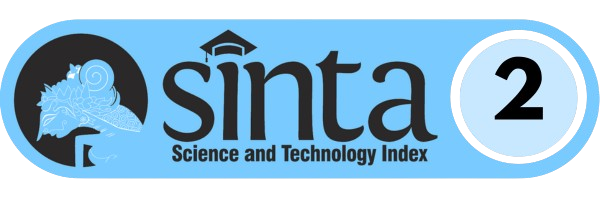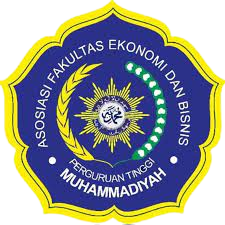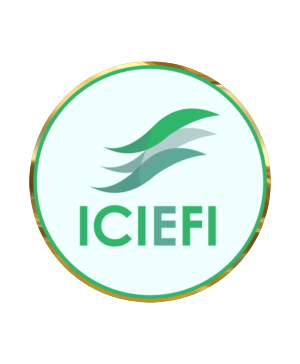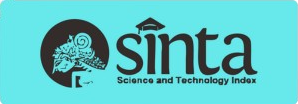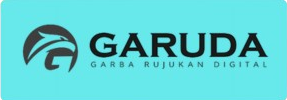Electronic Money, Materialism, And Social Media: The Triple Threat Reshaping Student Spending Habits
DOI:
https://doi.org/10.24269/ekuilibrium.v20i2.2025.pp295-316Keywords:
Electronic Money, Materialism, Attitudes Toward Social Media Content, Social Media Intensity, Consumption BehaviorAbstract
This study addresses the changing consumption patterns of university students driven by electronic money usage, materialistic values, and social media exposure, with the objective of examining how these factors influence student consumption behavior among students of the Faculty of Economics and Business at Tanjungpura University. Using a descriptive causal quantitative approach, data were collected through an online survey of 100 respondents and analyzed using Structural Equation Modeling (SEM) by AMOS. The research findings reveal that electronic money usage has no significant effect on consumption behavior. In contrast, materialism, social media intensity, and attitudes toward social media content had a significant beneficial effect on student consumption behavior. These results emphasize the importance of money management skill and financial inclusion strategies in shaping healthy consumption patterns and supporting sustainable development.
References
Abdullah, M. N. F., & Suja’i, I. S. (2022). Pengaruh Gaya Hidup dan Media Sosial Terhadap Perilaku Konsumtif. Jurnal Pendidikan DEWANTARA: Media Komunikasi, Kreasi Dan Inovasi Ilmiah Pendidikan, 8(2), 72–84. https://doi.org/https://doi.org/10.55933/jpd.v8i2.402
Achir, A. Y., & Kusumaningrum, T. M. (2021). Pengaruh Penggunaan Debit Card, Credit Card, E-Money, dan E-Walletterhadap Pengeluaran Konsumsi Mahasiswa. Jurnal Manajemen, 13(3), 554–568.
Afifah, N., & Yudiantoro, D. (2022). Pengaruh Gaya Hidup dan Penggunaan Uang Elektronik terhadap Perilaku Konsumtif. YUME: Journal of Management, 5(2), 365–375. https://doi.org/10.37531/yume.vxix.345
Afiyah, R. N. (2020). Pengaruh Penggunaan Uang Elektronik terhadap Perilaku Konsumtif (Studi pada Mahasiswa Tadris IPS UIN Syarif Hidayatullah Jakarta). Skripsi, UIN Syarif Hidayatullah Jakarta.
Alzura, D., & Khalifaturofiah, S. O. (2024). How Students’ Use of E-Commerce, E-Money, Financial Literacy, Self-Control, and Lifestyle Affect Their Consumptive Behavior. Jurnal Ilmu Keuangan dan Perbankan (JIKA), 13(2), 221–234.
Andarwati, L. (2016). Citra Diri Ditinjau dari Intensitas Penggunaan Media Jejaring Sosial Instagram pada Siswa Kelas XI SMAN 9 Yogyakarta. Jurnal Riset Mahasiswa Bimbingan dan Konseling, 5(3), 1–12.
Araujo, C. J. G., Perater, K. A. S., Quicho, A. M. V, & Etrata, A. E. (2022). Influence of TikTok Video Advertisements on Generation Z’s Behavior and Purchase Intention. International Journal of Social and Management Studies (Ijosmas), 3(2), 418–426. https://doi.org/doi.org/10.5555/ijosmas.v3i2.123
Armelia, Y., & Irianto, A. (2021). Pengaruh Uang Saku dan Gaya Hidup terhadap Perilaku Konsumtif Mahasiswa. EcoGen, 4(3), 418–426. https://doi.org/http://dx.doi.org/10.24036/jmpe.v4i3.11509
Balik, D., & Tupamahu, F. A. S. (2020). Efek Moderasi Kontrol Diri pada Hubungan Sifat Materialisme terhadap Pembelian Impulsif Online. Public Policy; Jurnal Aplikasi Kebijakan Publik Dan Bisnis, 1(2), 115–136. https://doi.org/https://doi.org/10.51135/PublicPolicy.v1.i2.p115-136
Bank Indonesia. (2024). Statistik Sistem Pembayaran dan Infrastruktur Pasar Keuangan (SPIP) Desember 2023. https://www.bi.go.id/id/statistik/ekonomi-keuangan/spip/Pages/SPIP-Desember-2023.aspx
Boediono. (2013). Seri Sinopsis Pengantar Ilmu Ekonomi No.1 Ekonomi Mikro (Edisi Kedu). Yogyakarta: BPFE.
Byrne, B. M. (2010). Structural Equation Modeling with Amos: Basic Concepts, Applications, and Programming (2nd ed). New York: Taylor and Francis Group.
Candy, C., Tania, K. S., Soveinia, S., & Stevania, W. (2022). Effect of E-Money on Consumptive Behavior of the Batam Community. JPIM (Jurnal Penelitian Ilmu Manajemen), 7(3), 333–343. https://doi.org/https://doi.org/10.30736/jpim.v7i3.1111
Dalillah, D. (2011). Manfaat Media Sosial bagi Humas. Artikel Universitas Muhammadiyah Malang.
Dewi, L. G. K., Herawati, N. T., & Adiputra, I. M. P. (2021). Penggunaan E-Money terhadap Perilaku Konsumtif Mahasiswa yang Dimediasi Kontrol Diri. EKUITAS (Jurnal Ekonomi Dan Keuangan), 5(1), 1–19.
Fromm, E. (1995). Masyarakat yang Sehat (T. B. Murtianto (penerj.); Edisi Pert). Jakarta: Yayasan Obor.
Ghozali, I. (2017). Model Persamaan Struktural Konsep dan Aplikasi Dengan Program AMOS 24 Update Bayesian SEM. Semarang: Badan Penerbit Universitas Diponegoro.
Hair, J. F., Risher, J. J., Sarstedt, M., & Ringle, C. M. (1998). When to Use and How to Report the Results of PLS-SEM. European Business Review, 31(1), 2–24. https://doi.org/https://doi.org/10.1108/EBR-11- 2018-0203
Haryono, S. (2016). Metode SEM Untuk Penelitian Manajemen dengan AMOS 22.00, LISREL 8.80 dan Smart PLS 3.0. Bekasi: Intermedia Personalia Utama.
Hengo, M., Ndoen, W., & Amtiran, P. (2021). Dampak Materialisme, Pengendalian Diri dan Motivasi pada Perilaku Pengelolaan Keuangan Keluarga. Journal of Management: Small and Medium Enterprises (SMEs), 14(1), 47–61. https://doi.org/https://doi.org/10.35508/jom.v14i1.3758
Indonesia Millennial Report. (2019). Memahami Perilaku Millennial Indonesia. https://cdn.idntimes.com/contentdocuments/indonesia-millennialreport-2019-by-idn-times.pdf
Insana, D. R. M., & Johan, R. S. (2020). Analisis Pengaruh Penggunan Uang Elektronik terhadap Perilaku Konsumtif Mahasiswa Pendidikan Ekonomi Universitas Indraprasta PGRI. Journal of Applied Business and Economics (JABE), 7(2), 209–224. https://doi.org/http://dx.doi.org/10.30998/jabe.v7i2.7822
Jenkins-Guarnieri, M. A., Wright, S. L., & Johnson, B. (2013). Development and Validation of A Social Media Use Integration Scale. Psychology of Popular Media Culture, 2(1), 38–50. https://doi.org/https://doi.org/10.1037/a0030277
Julita, & Aditya, R. (2023). Lifestyle Analysis, Pocket Money and Financial Literacy on Consumtive Behavior. International Journal of Business Economics (IJBE), 4(2), 141–152. https://doi.org/https://doi.org/10.30596/ijbe.v4i2.13764
Kotler, P., & Keller, K. L. (2012). Marketing Management (14th Editi). New Jersey: Pearson Education Inc.
Light, N., & Poniman, P. (2024). The Effect of Financial Literacy, E-Money Use and Self-Control on Consumptive Behavior. Jurnal Ilmiah Akuntansi Kesatuan, 12(1), 45–54. https://doi.org/https://doi.org/10.37641/jiakes.v12i1.2413
Mankiw, N. G. (2019). Pengantar Ekonomi Mikro (Edisi 7). Jakarta: Salemba Empat.
Mardikaningsih, R., Sesario, R., Fathur, A., Cahyadi, N., Negara, A. K., Khasanah, Fachrurazi, D. H., Tupamahu, Y. M., Purwanto, Dwijayanti, A., & Kiha, E. K. (2022). Pengantar Ekonomi Mikro. Batam: Yayasan Cendikia Mulia Mandiri.
Maulana, I., Merseyside, J., Manulang, B., & Salsabila, O. (2020). Pengaruh Social Media Influencer terhadap Perilaku Konsumtif di Era Ekonomi Digital. Majalah Ilmiah Bijak, 17(1), 28–34. https://doi.org/https://doi.org/10.31334/bijak.v17i1.823
Maulidina, Y., & Kurniawati, T. (2022). The Effect of E-Money, Economic Literacy and Parents’ Income on Consumptive Behavior. Economic Education Analysis Journal, 11(2), 191–200. https://doi.org/https://doi.org/10.15294/eeaj.v11i2.54254
Neti, U., Ulfah, M., & Syahrudin, H. (2020). Pengaruh Intensitas Penggunaan Media Sosial terhadap Perilaku Konsumtif Mahasiswa Prodi Pendidikan Ekonomi Universitas Tanjungpura. Jurnal Pendidikan dan Pembelajaran Khatulistiwa, 9(9), 1–8. https://doi.org/https://doi.org/10.26418/jppk.v9i9.42368
Nisak, S., & Santoso, R. (2023). Ability Locus of Control in Mediating Islamic Attitude and Knowledge on Financial Behavior. Ekuilibrium: Jurnal Ilmiah Bidang Ilmu Ekonomi, 18(2), 120–135. https://doi.org/https://doi.org/10.24269/ekuilibrium.v18i2.2023.pp120-135
Pellegrino, A., Abe, M., & Shannon, R. (2022). The Dark Side of Social Media: Content Effects on the Relationship Between Materialism and Consumption Behaviors. Frontiers in Psychology, 13, 1–15. https://doi.org/10.3389/fpsyg.2022.870614
Pindyck, S., R., Rubinfeld, & L, D. (2013). Microeconomics (8th ed). New Jersey: Pearson.
Pradhan, D., Israel, D., & Jena, A. K. (2018). Materialism and compulsive buying behaviour. Asia Pacific Journal of Marketing and Logistics, 30(5), 1239–1258. https://doi.org/10.1108/APJML-08-2017-0164
Praditha, E., Ismalia, K., Sanjaya, V. F., Sc, M., Raden, U., & Lampung, I. (2022). Pengaruh Uang Saku Bulanan dan Gaya Hidup terhadap Perilaku Konsumtif Mahasiswa Kost (Studi Kasus pada Mahasiswa Kost Daerah Sukarame). Jurnal Ekonomi Regional Unimal, 30(3), 46–56. https://ojs.unimal.ac.id/ekonomi_regional/index
Rismayanti, T., & Oktapiani, S. (2020). Pengaruh Uang Saku dan Gaya Hidup terhadap Perilaku Konsumtif Mahasiswa Fakultas Ekonomi dan Bisnis Universitas Teknologi Sumbawa. www.wartaekonomi.co.id
Rizkallah, E. G., & Truong, A. (2010). Consumptive Behavior, Promotional Preferences, And Shopping Patterns of Hispanic Americans: An Empirical Perspective. Journal of Business & Economics Research (JBER), 8(1).
Rozikin, A. Z., & Suyati, E. S. (2023). Pengaruh Media Sosial dan Efikasi Diri terhadap Perilaku Konsumsi Siswa SMAN 3 Palangka Raya. Jurnal Pendidikan Ekonomi Undiksha, 15(1), 28–35. https://doi.org/10.23887/jjpe.v15i1.54366
Sakina, A. P., Laksamana, R., & Kartika, M. (2024). Pengunaan E-wallet dari Sudut Pandang Ekonomi Islam. Jurnal Ekonomi Integra, 14(2), 263. https://doi.org/10.51195/iga.v14i2.361
Salvatore, D. (2006). Mikroekonomi (Edisi Keem). Jakarta: Erlangga.
Samuelson, A., P., & Nordhaus, W. D. (2001). Ilmu Mikroekonomi (Edisi 17). Jakarta: PT Media Global Edukasi.
Schiffman, L., & Kanuk, L. L. (2008). Perilaku Konsumen (Edisi Ketu). Jakarta: PT Indeks.
Setyowati, T., Widjayanti, F. N., & Kristiyana, N. (2025). The Role of Brand Image in Mediating Social Media Marketing and Customer Relationship on the Decision to Choose a Private University. Ekuilibrium: Jurnal Ilmiah Bidang Ilmu Ekonomi, 20(1), 208–228. https://doi.org/10.24269/ekuilibrium.v20i1.2025.pp208-228
Sudirman, Bakri, & Suharni. (2023). Pengaruh Sikap Materialisme terhadap Perilaku Menabung dan Impulsive Buying pada Kaum Milenial di Kota Makassar. Jurnal Ekonomi, Keuangan dan Manajemen, 19(4), 1040–1049.
Sugiyono. (2020). Metode Penelitian Kuantitatif, Kualitatif Dan Kombinasi (Mixed Methods). Bandung: Alfabeta.
Sukirno, S. (2019). Mikroekonomi Teori Pengantar (Edisi Keti). Jakarta: Rajawali Pers.
Türkyilmaz, C. A., Kocamaz, I., & Uslu, A. (2016). Materialism and Brand Resonance as Drivers of Online Compulsive Buying Behavior. The Journal of Academic Social Science Studies, 15(1), 91–91. https://doi.org/10.9761/JASSS3303
Umiarso, & Rijal, S. (2019). Crystallization of the Value of Materialism in the Formation of Consumeristic Behavior among the Banda Aceh Urban Communities. KONTEKSTUALITA: Jurnal Penelitian Sosial Keagamaan, 34(1), 60–80. https://doi.org/https://doi.org/10.30631/kontekstualita.v34il.166
UMN Consulting. (2022). Menilik Gaya Gen Z Berbelanja. https://jeo.kompas.com/menilik-gaya-gen-z-berbelanja
We Are Social. (2024). Data Digital Indonesia 2024. https://andi.link/hootsuite-we-are-social-data-digital-indonesia-2024/
Wicaksono, S. (2022). Teori Dasar Technology Acceptance Model. Malang: CV. Seribu Bintang.
Widiasari, W., Lizein, B., Kristini, M. A., Nursiva, R. T., & Saputri, E. E. (2023). e Effect of Lifestyle, Pocket Money, Financial Literacy on Students’ Consumptive Behavior. Journal of Economic Global, 1(1), 47–55.
Wulandari, K. (2018). Pengaruh Kecanduan Internet dan Materialisme terhadap Perilaku Pembelian Kompulsif Online. E-Jurnal Manajemen Universitas Udayana, 7(2), 1021. https://doi.org/10.24843/EJMUNUD.2018.v7.i02.p17
Yahya, A. (2021). Determinan Perilaku Konsumtif Mahasiswa. Jurnal Pengembangan Wiraswasta, 23(1), 37. https://doi.org/10.33370/jpw.v23i1.506
Yodi, H. P., & Widyastuti, S. (2020). The Effects of Content and Influencer Marketing on Purchasing Decisions of Fashion Erigo Company. Dinasti International Journal of Economics, Finance & Accounting, 1(2), 345–357. https://doi.org/https://doi.org/10.38035/dijefa.v1i2.309
Zhechev, V., & Sekulova, D. (2024). Potential Effects of Instagram Usage on Conspicuous Consumption of Premium Luxurious Fashion Products among Bulgarians. Central European Business Review, 13(2), 1–25. https://doi.org/10.18267/j.cebr.343
Downloads
Published
How to Cite
Issue
Section
License

This work is licensed under a Creative Commons Attribution-ShareAlike 4.0 International License.
Retained Rights/Terms and Conditions of Publication
1. As an author you (or your employer or institution) may do the following:
- make copies (print or electronic) of the article for your own personal use, including for your own classroom teaching use;
- make copies and distribute such copies (including through e-mail) of the article to research colleagues, for the personal use by such colleagues (but not commercially or systematically, e.g. via an e-mail list or list server);
- present the article at a meeting or conference and to distribute copies of the article to the delegates attending such meeting;
- for your employer, if the article is a ‘work for hire’, made within the scope of your employment, your employer may use all or part of the information in the article for other intra-company use (e.g. training);
- retain patent and trademark rights and rights to any process, procedure, or article of manufacture described in the article;
- include the article in full or in part in a thesis or dissertation (provided that this is not to be published commercially);
- use the article or any part thereof in a printed compilation of your works, such as collected writings or lecture notes (subsequent to publication of the article in the journal); and prepare other derivative works, to extend the article into book-length form, or to otherwise re-use portions or excerpts in other works, with full acknowledgement of its original publication in the journal;
- may reproduce or authorize others to reproduce the article, material extracted from the article, or derivative works for the author's personal use or for company use, provided that the source and the copyright notice are indicated, the copies are not used in any way that implies RCEPM-LIPI endorsement of a product or service of any employer, and the copies themselves are not offered for sale.
All copies, print or electronic, or other use of the paper or article must include the appropriate bibliographic citation for the article's publication in the journal.
2. Requests from third parties
Although authors are permitted to re-use all or portions of the article in other works, this does not include granting third-party requests for reprinting, republishing, or other types of re-use. Requests for all uses not included above, including the authorization of third parties to reproduce or otherwise use all or part of the article.
3. Author Online Use
- Personal Servers. Authors and/or their employers shall have the right to post the accepted version of articles pre-print version of the article, or revised personal version of the final text of the article (to reflect changes made in the peer review and editing process) on their own personal servers or the servers of their institutions or employers without permission from Universitas Muhamamdiyah Ponorogo, provided that the posted version includes a prominently displayed Universitas Muhamamdiyah Ponorogo copyright notice and, when published, a full citation to the original publication, including a link to the article abstract in the journal homepage. Authors shall not post the final, published versions of their papers;
- Classroom or Internal Training Use. An author is expressly permitted to post any portion of the accepted version of his/her own articles on the author's personal web site or the servers of the author's institution or company in connection with the author's teaching, training, or work responsibilities, provided that the appropriate copyright, credit, and reuse notices appear prominently with the posted material. Examples of permitted uses are lecture materials, course packs, e-reserves, conference presentations, or in-house training courses;
- Electronic Preprints. Before submitting an article to an Ekuilibrium: Jurnal Ilmiah Bidang Ilmu Ekonomi, authors frequently post their manuscripts to their own web site, their employer's site, or to another server that invites constructive comment from colleagues. Upon submission of an article to Ekuilibrium: Jurnal Ilmiah Bidang Ilmu Ekonomi, an author is required to transfer copyright in the article to Economy Faculty Universitas Muhammadiyah Ponorogo, and the author must update any previously posted version of the article with a prominently displayed Economy Faculty Universitas Muhammadiyah Ponorogo copyright notice. Upon publication of an article by the Universitas Muhammadiyah Ponorogo, the author must replace any previously posted electronic versions of the article with either (1) the full citation to the work with a Digital Object Identifier (DOI) or link to the article abstract in Ekuilibrium: Jurnal Ilmiah Bidang Ilmu Ekonomi journal homepage, or (2) the accepted version only (not the final, published version), including the Economy Faculty Universitas Muhammadiyah Ponorogo copyright notice and full citation, with a link to the final, published article in journal homepage.
4. Articles in Press (AiP) service
Economy Faculty Universitas Muhammadiyah Ponorogo may choose to publish an abstract or portions of the paper before we publish it in the journal. Please contact our Production department immediately if you do not want us to make any such prior publication for any reason, including disclosure of a patentable invention.
5. Author/Employer Rights
If you are employed and prepared the article on a subject within the scope of your employment, the copyright in the article belongs to your employer as a work-for-hire. In that case, Economy Faculty Universitas Muhammadiyah Ponorogo assumes that when you sign this Form, you are authorized to do so by your employer and that your employer has consented to the transfer of copyright, to the representation and warranty of publication rights, and to all other terms and conditions of this Form. If such authorization and consent has not been given to you, an authorized representative of your employer should sign this Form as the Author.
6. RCEPM-LIPI Copyright Ownership
It is the formal policy of Economy Faculty Universitas Muhammadiyah Ponorogo to own the copyrights to all copyrightable material in its technical publications and to the individual contributions contained therein, in order to protect the interests of the Economy Faculty Universitas Muhammadiyah Ponorogo, its authors and their employers, and, at the same time, to facilitate the appropriate re-use of this material by others. Economy Faculty Universitas Muhammadiyah Ponorogo distributes its technical publications throughout the world and does so by various means such as hard copy, microfiche, microfilm, and electronic media. It also abstracts and may translate its publications, and articles contained therein, for inclusion in various compendiums, collective works, databases and similar publication.
7. Licensing Terms
Ekuilibrium is licensed under a Creative Commons Attribution-ShareAlike 4.0 International License.
Permissions beyond the scope of this license may be available at https://journal.umpo.ac.id/


